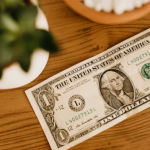When it comes to currencies, the financial world is a diverse and intricate ecosystem, with each nation’s money reflecting its economic strength and global influence. In this article, we’ll take a fascinating journey through some of the world’s strongest currencies, delving into their histories, unique attributes, and the factors that contribute to their remarkable value. From the majestic Kuwaiti Dinar to the ever-potent United States Dollar, join us as we explore these financial powerhouses.
1. Kuwaiti Dinar (KWD): A Tale of Stability and Prosperity
The Kuwaiti Dinar (KWD) stands proudly as one of the most potent and valuable currencies globally, a testament to Kuwait’s economic prosperity and prudent financial policies. Since its introduction in 1961, the Kuwaiti Dinar has symbolized the nation’s resilience and strategic management of its abundant oil resources.
Unlike many Gulf Cooperation Council (GCC) countries, Kuwait’s currency isn’t pegged solely to the US dollar. Instead, it’s linked to a diversified basket of international currencies, including the US dollar, reflecting Kuwait’s economic versatility and global outlook. This blend ensures stability while accommodating the fluctuations in the oil market, a pivotal factor in Kuwait’s economy.
As you stroll through Kuwait’s bustling markets, you’ll notice the Dinar’s distinct banknotes, adorned with images of historical figures and cultural icons. This revered currency serves not only as a symbol of financial strength but also as a representation of Kuwait’s rich heritage.
2. Bahraini Dinar (BHD): An Oasis of Financial Fortitude
The Kingdom of Bahrain boasts a currency that exudes strength and unwavering stability—the Bahraini Dinar (BHD). Introduced in 1965 to replace the Gulf Rupee, this remarkable currency is pegged to the US dollar at a steadfast rate, reflecting Bahrain’s commitment to sound fiscal policies.
Bahrain’s open economy and robust financial sector make the Bahraini Dinar a cornerstone of the nation’s economic prowess. This currency’s resilience, bolstered by Bahrain’s currency controls and strategic positioning, makes it a symbol of financial integrity and global interconnectedness.
Stroll through the vibrant streets of Bahrain, and you’ll witness the BHD in action, facilitating seamless transactions and fostering economic growth. As this currency continues to flourish, it stands as a testament to Bahrain’s unwavering commitment to prosperity.

3. Omani Rial (OMR): A Currency of Tradition and Strength
Amid the captivating landscapes of the Sultanate of Oman, you’ll encounter a currency that embodies history and resilience—the Omani Rial (OMR). Since its inception in 1970, the Omani Rial has stood as a beacon of economic stability and thoughtful financial management.
Pegged to the US dollar, the Omani Rial maintains a steadfast exchange rate, a testament to Oman’s dedication to robust economic policies. The rial’s divisions into 1,000 baisa and its portrayal of Omani landmarks on its banknotes reveal a currency deeply intertwined with the nation’s cultural fabric.
As you wander through Oman’s enchanting markets and bask in its rich heritage, the Omani Rial’s presence underscores the nation’s enduring commitment to prosperity and financial strength.
4. Jordanian Dinar (JOD): The Guardian of Stability
In the heart of the Hashemite Kingdom of Jordan, the Jordanian Dinar (JOD) stands as a symbol of unwavering stability and fiscal prudence. Introduced in 1950, the JOD has played a pivotal role in Jordan’s economic journey, fostering growth and resilience.
Distinct from many of its regional counterparts, Jordan’s choice to peg the dinar to the US dollar reflects its commitment to maintaining economic stability and control over inflation. This measured approach has solidified the JOD’s position as a currency of trust and reliability.
Explore the bustling markets of Jordan, and you’ll encounter the JOD facilitating transactions with an air of sophistication and strength. As a guardian of financial stability, the Jordanian Dinar encapsulates Jordan’s enduring commitment to prosperity and economic well-being.
5. Swiss Franc (CHF): A Testament to Precision and Prowess
Nestled within the picturesque landscapes of Switzerland and Liechtenstein, the Swiss Franc (CHF) reigns supreme as a currency renowned for its precision and economic prowess. A haven of stability, the CHF stands as a global symbol of security and reliability.
While Switzerland bid farewell to the gold standard, its central bank’s interventions have perpetuated a strategic relationship with the euro, reinforcing the CHF’s status as a safe haven currency. This enduring value has solidified the Swiss Franc’s position as a favored choice for international transactions.
As you traverse the charming streets of Switzerland, the CHF’s presence in daily life underscores its significance in the nation’s financial tapestry. From the iconic banknotes to the meticulous coinage, the Swiss Franc captures Switzerland’s commitment to meticulous financial stewardship.

6. Euro (EUR): A Tapestry of Unity and Strength
Embark on a journey across the diverse landscapes of the Eurozone, and you’ll encounter a currency that embodies unity and strength—the Euro (EUR). Introduced in 1999 as an emblem of European cooperation, the Euro has become one of the world’s most widely held reserve currencies.
Fluctuating in value according to market dynamics, the Euro reflects the collective economic strength of its 19 member countries. From the historic streets of Rome to the bustling financial centers of Frankfurt, the Euro stands as a testament to the shared vision and prosperity of the European Union.
The Euro’s presence in daily transactions underscores its role as a unifying force, fostering economic growth and stability across the Eurozone. As the Euro continues to shape the region’s financial landscape, it serves as a powerful symbol of cooperation and resilience.
7. United States Dollar (USD): The Global Standard-Bearer
Spanning the expanse of the United States of America, the United States Dollar (USD) reigns supreme as a global standard-bearer of financial strength and influence. As the world’s most widely used reserve currency, the USD’s iconic symbol resonates across nations and continents.
From Wall Street’s bustling trading floors to the picturesque landscapes of Main Street, the USD’s ubiquity in daily transactions reflects its pivotal role in international trade and finance. Its value, determined by a myriad of economic indicators and geopolitical events, makes it a currency of perpetual dynamism.
As the backbone of global commerce, the USD symbolizes the United States’ economic prowess and unwavering commitment to financial stability. From its diverse denominations to its historical legacy, the United States Dollar remains a cornerstone of the world’s financial landscape.
In the intricate tapestry of global currencies, each currency weaves a unique story of strength, resilience, and economic vitality. From the Kuwaiti Dinar’s enduring stability to the United States Dollar’s global influence, these currencies stand as pillars of the international financial order. As we navigate the ever-evolving world of economics, these currencies serve as beacons of prosperity, embodying the spirit of their respective nations and shaping the destiny of the global economy.
For more insights into the fascinating realm of global currencies and their impact on the financial landscape, visit TrendFXNow and stay informed about the forces that drive our interconnected world.




